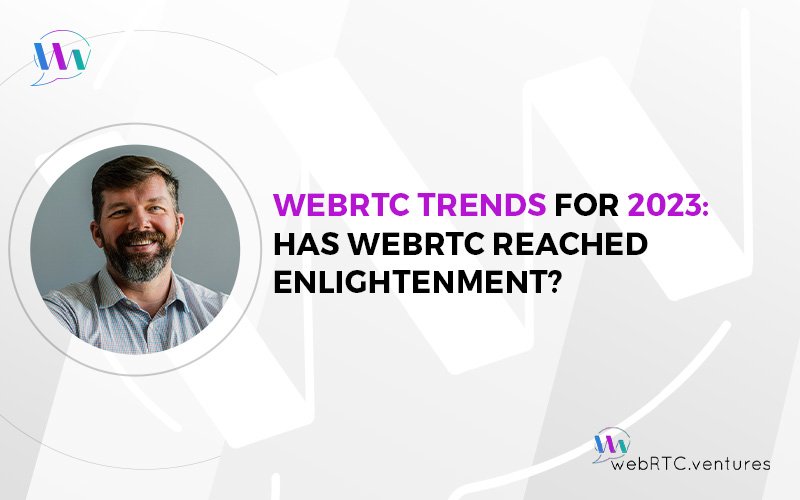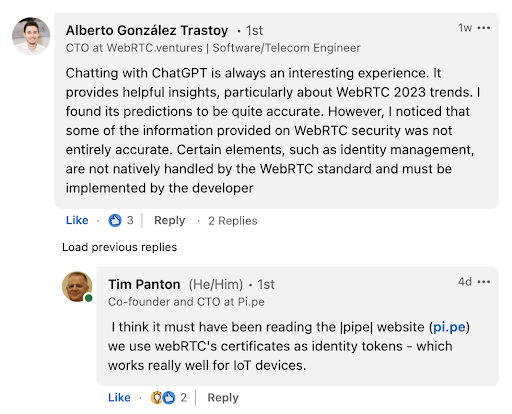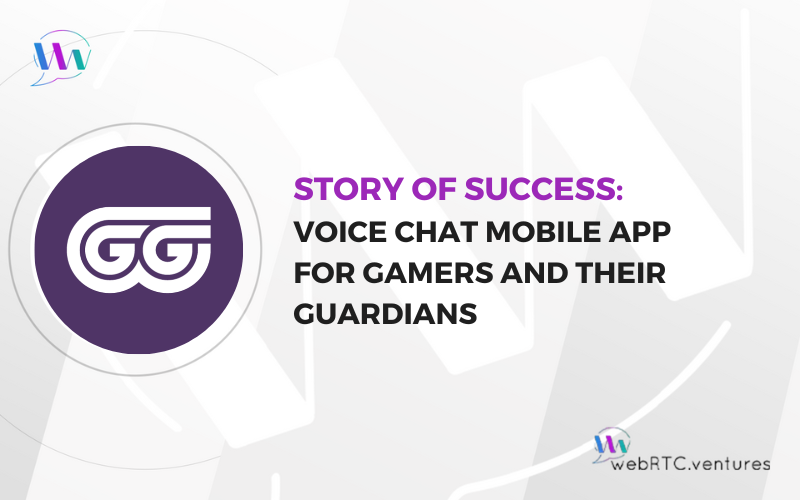What is the state of WebRTC application development at the beginning of 2023? What are the trends we can expect in the coming years? Here at WebRTC.ventures, we worked with dozens of clients in 2022 and hundreds since we started building live video applications with WebRTC in 2015. In this post, I’ll provide a few insights based on what we are seeing in the marketplace from our unique position as a leading integrator and application developer of WebRTC applications.
In those seven years, we have all been through a number of negative events: global economic upheaval, a pandemic, and the current tech industry panic as over-leveraged companies deal with increased interest rates on their debt and a sudden pressure to be sustainably profitable.
On the positive side, it’s easier than ever to participate in the global marketplace from your home and WebRTC has played a major role in this ability. There has been dramatic growth in the use of WebRTC across a wide set of use cases driven by the increase in remote work and a flattening of the world economy.
We have also seen the WebRTC standard actually become a standard!
In short, it’s been an eventful few years! But what does it all mean? And where do we go from here?
WebRTC’s journey thus far
Let’s look at a couple of interesting trends identified by other thought leaders in our industry. First, WebRTC and CPaaS industry analyst Tsahi Levent-Levi pointed to this Stack Overflow graph about “interest in WebRTC”, and noted that it has returned to pre-pandemic levels.
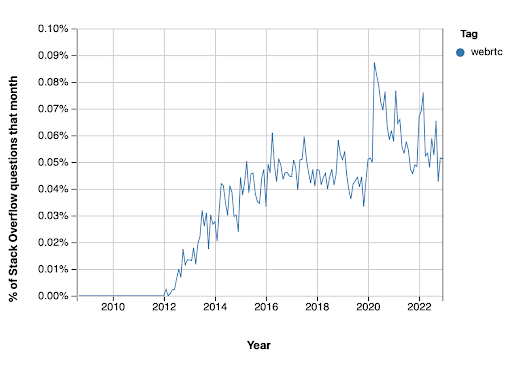
This graph shows how frequently developers are searching for WebRTC on Stack Overflow, which is an interesting metric of developer interest. Clearly, that interest has gone back to previous levels.
Does this mean WebRTC has peaked and no one is interested anymore? Definitely not. This settling down trend is similar to many broader trends since the peak of the pandemic. For instance, we see some people going back to the office, but at the same time remote work is becoming a permanent part of our economy. Tsahi also wrote in early 2022 about WebRTC use metric metrics, indicating the use of WebRTC had decreased since the peak of the pandemic. But, they were still at levels way above 2019 and prior.
For another view of the WebRTC development ecosystem, take a look at this chart put together by Chad Hart of WebRTC Hacks which he discussed in an episode of WebRTC Live in October 2022.
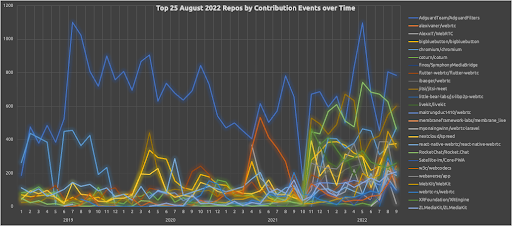
Chad dove into a number of trends based on his analysis of open source projects on GitHub. The full post is well worth a read. In this chart, Chad looks at the top 25 WebRTC projects on GitHub and the history of their activity. Chad noted:
“My conclusion is that this isn’t just an anomalous single project or a few projects driving increased WebRTC development – it is a bunch of them. That’s a good sign for WebRTC’s health.” – Chad Hart, WebRTC Hacks
This tells me that while WebRTC usage has leveled out in the last year and new developers to WebRTC may be slowing down based on Stack Overflow, there is still a tremendous amount of interest and activity going on in WebRTC related projects.
WebRTC has reached the “Slope of Enlightenment”
All of this lines up with where I would put WebRTC on the famous Gartner Hype Cycle. If you’re not familiar, the hype cycle is a common model that shows how most technology moves from an initial innovation to an explosion of growth, moving to a peak where people have unrealistic expectations of the value of that technology, then through a valley where they realize it was over-hyped. The cycle ends with a stage of maturity called the “Plateau of Productivity.” At that plateau, the technology is well adapted to the use cases it’s applied to and there is reasonable and consistent value derived from that technology.
It is my belief that WebRTC has reached the Slope of Enlightenment and is nearing the Plateau of Productivity. The image below shows where I would track recent events related to WebRTC on the hype cycle.
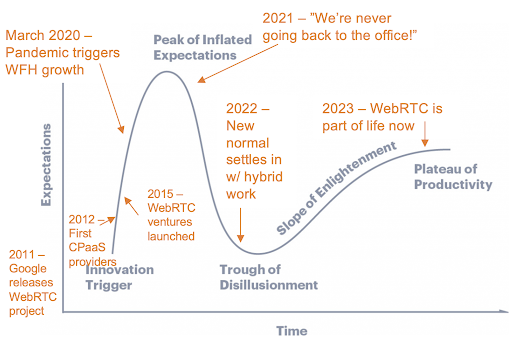
For years before the pandemic, companies were hyping the possibility of the WebRTC standard to change online communications. Many CPaaS’s were born to build commercially scalable implementations of WebRTC. Companies like ours at WebRTC.ventures were born to provide software development services around this technology to early adopters.
Then the pandemic happened and triggered explosive growth. For a brief period in 2021, we all thought we would never go back to the office. Things settled down in 2022 and the economy and work world has been settling into a new normal of hybrid work. WebRTC is now a part of life in 2023. The explosive growth has passed. We are now at the stage of gaining more and more value from WebRTC, and learning where best to apply this technology.
When a technology reaches the Plateau of Productivity, it often means that the larger companies now see it as viable, scalable, and valuable to their enterprises, They begin to incorporate it. Ideas move from, “hey we could do this cool thing” to, “how do we make money with this?” It’s a sign of maturity, and in my opinion, a good thing.
Perhaps we have not quite reached the Plateau of Productivity with WebRTC just yet. But we are definitely on the Path to Enlightenment and companies are making better use of WebRTC at scale.
This mindset change about WebRTC is a reflection of the change in how that technology is used, and we have started to see that in our work as well at WebRTC.ventures.
What’s next with WebRTC? Let’s ask ChatGPT (or not!)
For fun, and as part of my own journey to WebRTC Enlightenment, I recently posted about a “conversation” that I had with ChatGPT. ChatGPT is a very cool technology that is certainly somewhere around the “peak of inflated expectations.” Many of us are playing with it, trying to decide when it’s a brilliant AI and when it’s just a glorified search engine with exceptionally good BS skills and a very low sense of truth.
I recommend reading what ChatGPT came up with, but not putting too much faith in what it predicts. Some of it is misplaced understanding of the technologies involved (conflating WebSockets and WebRTC), or over-amplifications of concerns raised on the internet (WebRTC and security searches will lead to concerns about privacy leaks due to how STUN and TURN servers negotiate peer-to-peer network traffic). Other parts are just good summaries and/or misapplications of what others have written.
For instance, our CTO Alberto Gonzalez and I wondered why ChatGPT emphasized identity so much with WebRTC. It’s not a common problem set to try and solve with WebRTC. But our friend and colleague Tim Panton of |pipe| pointed out on my LinkedIn post that ChatGPT may be tapping into some of their work around identity and security for IoT which utilizes WebRTC.
The answers we get from ChatGPT are interesting and somewhat valuable. But we’re going to be disillusioned if we expect them to be accurate or useful predictions of the future.
Looking into the present and future of WebRTC applications
Alright, let’s forget about the types of AI that steal the headlines. Our various industry partners often ask our team at WebRTC.ventures about the trends we see in WebRTC application development, since we work across a wide variety of use cases and verticals. Here are the most important trends we see from our customers and in the WebRTC space right now:
WebRTC Trend #1 – Scaling
When we first started building video applications in 2015, our clients were primarily focused on short term innovation. They wanted to be the first to try WebRTC video calls in a certain sector of telehealth for instance. At that time, the business model and the care model were not proven, and neither was the technology. WebRTC didn’t work in every browser, and not many people were trying to scale it globally. Customers were mainly concerned, “will this work at all?” This meant our work was focused on prototypes that helped them secure their next round of funding or to test a business concept.
That’s no longer the case. Customers are now more sophisticated and further on their own business development journeys. Their questions now are, “how big can it go?”.
The choice of an open source media server or a CPaaS for our clients now relies more on how well that architecture will scale globally with their user base. Prototypes are much less fashionable, and scalable enterprise solutions are much more important. WebRTC has hit the big time.
For scaling, the globally well known providers like Vonage have long been able to offer global infrastructure and scaling of their communications APIs across many different communication modals. The Amazon Chime SDK also has entered that fold by leveraging the global network of AWS combined with a powerful API that is enterprise-ready. Even open source solutions like LiveKit now have more scaling capabilities built in (such as their streamlined Kubernetes deployments), as well as a fully managed cloud deployment option LikeKit Cloud that is basically a CPaaS.
WebRTC Trend #2 – Stability
Closely related to scalability is stability. In years past, stability questions were mainly about things like Safari browser compatibility and video codecs. Now our customers want to know more about how a solution can be made to have stable quality as it scales, and how to monitor and measure that stability. The use of services like testRTC for testing and monitoring can be a big boon here, as well as more general automated testing of applications and infrastructure. Also, this stability is what caused more traditional fields like agriculture, healthcare, education or legal services to start using WebRTC for custom video and audio apps.
WebRTC Trend #3 – AI/ML integration
I’ve often said that WebRTC applications should be about more than video. Just building video into a business process is not enough to create sustainable value. We need to consider how we can use and integrate that video to create more innovative value. This is where integrating with AI/ML services is becoming more important to our clients.
Services like Symbl.ai, TensorFlow, or Amazon Rekognition allow us to do more advanced WebRTC integrations for our clients. Speech to text transcripts, sentiment analysis, visual object detection, and content moderation can all be done in real-time using these various services. Our best customers are looking at doing more than just adding video into their business process, they want to leverage that video and AI to transform business processes.
WebRTC Trend #4 – Drop Ins and Pre Builts
Ever since the launch of WebRTC in 2011, people have talked about how it brings the power of communications into the browser with just a few lines of JavaScript. It’s been sold as very easy to use. While that’s true when compared to more legacy VOIP and telecom application development, it’s still been a bit of a sales pitch.
Today, the different CPaaS platforms are offering more truly pre-built and drop-in types of solutions. Now it is truly much easier to get started with WebRTC video application development. While the various CPaaS vendors have always had sample projects, Daily’s Prebuilt does a particularly good job offering a solution that you can use to build a simple video solution in minutes.
You’ll still need to switch to their advanced APIs when you want a more custom solution. That’s a great time to contact our team and tap into our expertise.
WebRTC Trend #5 – Conversational AI
Despite the hype and inflated expectations surrounding large language models like ChatGPT, there is a role for Conversational AI in video applications. I expect to see a lot more of this in 2023. For a full discussion of the topic, check out my recent WebRTC Live episode with Paul Sweeney and Ben Waymark from Webio about Trends in Conversational Chat, as well as past blog posts I wrote about the Voice22 conference (part 1 and part 2 on “going multimodal”).
This is an area where I see lots of possibilities for innovation in customer contact centers which blend conversational AI over text chat with live video agents. Vonage’s AI Studio is one way to build low-code conversation flows, but still with the capability of adding in code hooks so that we can integrate it with your video calls and overall business workflows.
Conclusion: Achieving Enlightenment and Productivity
For me, seeing more of this type of work is a major sign that we are nearing the “Plateau of Productivity” for WebRTC. Live video is being used more at the enterprise level and not just in cool startup ideas.
Enlightenment for WebRTC means an increased focus on scalability, stability, and the integration of capabilities which provide value beyond just the video itself. The intersection of scalable CPaaS networks, stable WebRTC implementations, and innovative uses of AI and ML services is how companies are already going well beyond the inflated expectations of the WebRTC prototype era.
WebRTC prototypes are dead – long live the WebRTC prototype! It’s not just about prototypes anymore. Let’s scale it and make it valuable to users and the businesses investing in it. Our team is here to help you build a custom WebRTC application or integrate WebRTC capabilities into your existing product workflows, contact us anytime to learn more!
